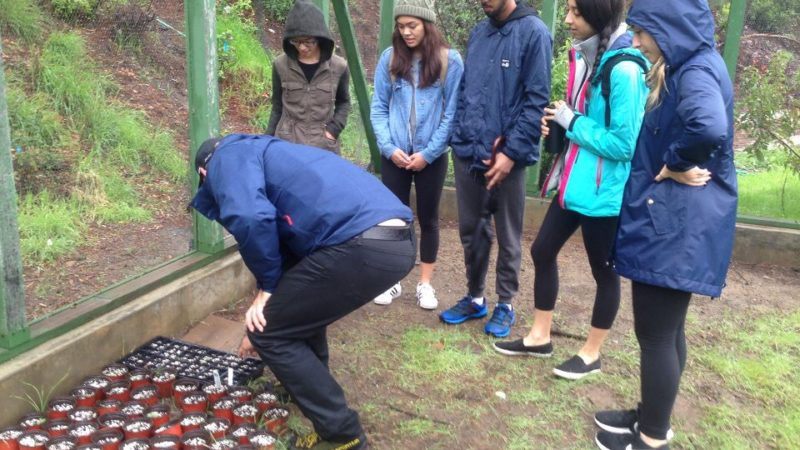
By Polly Kirsch and Valeree Catangay
On a rainy Monday afternoon, our team met with Dr. Gillespie at Sage Hill to get our hands dirty. He showed us the nursery (see photo) and explained how we will be quantifying the success of the various native plants being grown there. We discussed how we will be recording baseline data of native plants to Sage Hill using iNaturalist, and also did a spontaneous experiment to determine the conditions under which the seeds grow best. We planted Encelia californica, a native California sunflower, using two different methods. First, we raked one-by-one meter squares and distributed the seeds within the squares. We also dug and cleared some smaller circular holes and planted the species there. When we return to Sage Hill, we plan to determine if any of the seeds grew and qualitatively identify the best method of the two.
Our team has decided to develop the restoration plan for Sage Hill based on the success of the methods we will try out while we work there. We are planning to introduce additional native species to diversify Sage Hill. We will be weeding, taking inventory, and planting more seeds in the upcoming weeks as part of the restoration process. Additionally, with the upcoming due date for The Green Initiative Fund, our team is solidifying the application for signage at Sage Hill. Rain or shine, Biodiversity is getting down and dirty!
